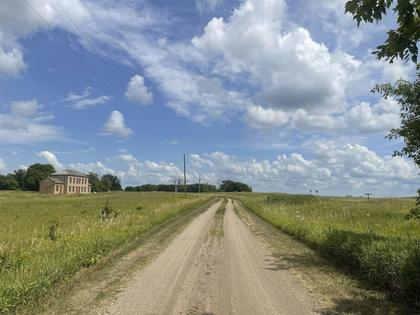Land reparations are possible − and over 225 US communities are already working to make amends for slavery and colonization
Published in News & Features
Ever since the United States government’s unfulfilled promise of giving every newly freed Black American “40 acres and a mule” after the Civil War, descendants of the enslaved have repeatedly proposed the idea of redistributing land to redress the nation’s legacies of slavery.
Land-based reparations are also a form of redress for the territorial theft of colonialism.
Around the world, politicians tend to dismiss calls for such initiatives as wishful thinking at best and discrimination at worst. Or else, they are swatted away as too complex to implement, legally and practically.
Yet our research shows a growing number of municipalities and communities across the U.S. are quietly taking up the charge.
We are geographers who since 2021 have been documenting and analyzing over 225 examples of reparative programs underway in U.S. cities, states and regions. Notably, over half of them center land return.
These efforts show how working locally to grapple with the complexity of land-based reparations is a necessary and feasible part of the nation’s healing process.
Evanston, Illinois, launched the country’s first publicly funded housing reparations program in 2019.
In its current form, Evanston’s Restorative Housing Program has provided disbursements to more than 200 recipients. All are Black residents of Evanston or direct descendants of residents who experienced housing discrimination between 1919 and 1969. Benefits include down payment assistance and mortgage assistance as well as funds to make home repairs and improvements.
The goal is to redress the harm Evanston caused during these 50-plus years of racial discrimination in public schools, hospitals, buses and segregated residential zoning. During that same period, banks in Evanston, as in other U.S. cities, also refused to give Black residents mortgages, credit or insurance for homes in white neighborhoods.
“I always said you can keep the mule,” program beneficiary Ron Butler told NBC News in 2024. “Give me the 40 acres in Evanston.”
Reparations that focus on land, housing and property are about more than making amends for centuries of racial discrimination. They help to restore people’s self-determination, autonomy and freedom.
Following Evanston’s lead, in 2021 a group of 11 U.S. mayors created Mayors Organized for Reparations and Equity, a coalition committed to developing pilot reparations programs. Members include Los Angeles, Austin and Asheville.
The cities act as sites to generate ideas about how reparation initiatives could be scaled up nationally. Each mayor is advised by committees made up of representatives from local Black-led organizations.
In recent years the city of Eureka, in Northern California, has been returning some territory to its Native inhabitants.
Indigenous people often call this process rematriation; it’s part of a broader effort to restore sovereignty and sacred relationships to their ancestral lands.
In 2019, after years of petitioning by members of the Wiyot people, the Eureka City Council returned 200 acres of Tuluwat Island, a 280-acre island in Humboldt Bay where European settlers in 1860 massacred about 200 Wiyot women and children.
“It’s a sovereignty issue, a self-governance issue,” said Wiyot tribal administrator Michelle Vassel in a November 2023 radio interview.
Minneapolis’ sale of city lots to the Red Lake Nation for $1 in 2023 is another example of how city governments can make amends for past Indigenous displacement and removal. Plans to develop the low-cost lots include a cultural center for Red Lake people, an opioid treatment center and potentially housing.
The Red Lake Reservation once included 3.3 million acres. The 1889 Dawes Act forced the Red Lake Band to cede all but 300,000 acres. The federal government later returned some land, but today the reservation is still only a quarter of its original size.
These initiatives may sound like a drop in the bucket considering the vast harms committed over centuries of slavery and colonization. Yet they prove that governments can craft targeted, achievable and meaningful policies to address colonialism and enslavement.
They also tackle a frequent critique of reparations, which is that slavery and colonialism happened centuries ago. Yet their effects continue to harm Black and Native communities generations later. Today, white households in the U.S. have roughly nine times the wealth of typical Black households.
One explanation for this racial disparity is that Black households earn 20% less than their white counterparts. But a more meaningful driver is what scholars call the “intergenerational transmission chain” – that is, the role that gifts and inheritance play in wealth generation.
That’s why reparations – with both land and money – are so critical to creating racial equity.
Still, reparations programs do raise a host of complex, practical questions. Which kinds of historic racial injustice take priority, and what form should repair take? Who qualifies for the benefits?
Reparations don’t have to come from the government.
In recent years, more than a hundred community-based organizations across the U.S. have introduced their own initiatives to redistribute land and wealth to make amends for past injustices.
Makoce Ikikcupi, in the Minnesota River Valley, is a community reparations program led by Dakota peoples. Since 2009, the group has been collecting funds to buy back portions of the Dakota homeland. One revenue source is voluntary contributions from descendants of Europeans who colonized that land. This fundraising strategy is sometimes called “real rent” or “back rent.”
The group purchased its first 21-acre parcel of land in 2019, where it is building traditional earth lodges, with plans for several self-sustaining Dakota villages.
“We consider our donation…‘back rent,’” reads the testimony of one monthly contributor, Josina Manu, on the group’s webpage. He calls the reclamation of Dakota land a “vital” step “towards creating a just world.”
Many communities are also working together to repair the legacies of anti-Black racism.
In the 1960s, the city of Athens, Georgia, used eminent domain to build dormitories for the University of Georgia. Paying below market value, it demolished an entire Black neighborhood called Linnentown.
In early 2021, following petitioning from former Linnentown residents who’d lost their homes, the City Council unanimously passed a resolution recognizing their neighborhood’s destruction as “an act of institutionalized white racism and terrorism resulting in intergenerational Black poverty.”
Because Georgia law prohibits government entities from making payments to individuals, a community group stepped in to organize compensation.
The result is Athens Reparations Action, a coalition of churches and community organizations. Formed in 2021, it had raised $120,000 by 2024 to distribute among the 10 families who are Linnentown survivors and descendants.
Our research also tracks legal challenges to the reparations initiatives we are studying.
Conservative groups such as Judicial Watch have filed dozens of retaliatory lawsuits against several of them, including Evanston’s Restorative Housing Program. A 2024 class action complaint alleges that the program discriminates based on race, violating the equal protection clause of the U.S. Constitution.
These legal challenges are part of the broader front of conservative-led assaults on voting rights, affirmative action and critical race theory. Like reparations, all are efforts to grapple with the U.S.’s historical mistreatment of Black, Indigenous and other people of color.
Attacking those initiatives is an attempt to preserve what scholar Laura Pulido calls “white innocence.” We expect more of them under a second Trump term already defined by its assault on antidiscrimination policies and programs.
So far, none of Trump’s decrees has targeted reparations specifically. For now, reparations are still legal and constitutional – and possible.
This article is republished from The Conversation, a nonprofit, independent news organization bringing you facts and trustworthy analysis to help you make sense of our complex world. It was written by: Sara Safransky, Vanderbilt University; Elsa Noterman, Queen Mary University of London, and Madeleine Lewis, Vanderbilt University
Read more:
Why reparations are always about more than money
Detroit’s reparations task force now has until 2025 to make its report, but going slow with this challenging work may not be a bad thing
Should the U.S. provide reparations for slavery and Jim Crow?
Sara Safransky has received funding from the National Science Foundation, the Social Science Research Council, the Wenner-Gren Foundation, and the American Council of Learned Societies, however, I have not received funding from these organizations for the research project discussed in this article. The only grant I've received to fund this research is an internal grant from Vanderbilt University.
Elsa Noterman has received funding from the National Science Foundation, the American Council of Learned Societies, and the British Academy. However, I have not received funding from these organizations for the research project discussed in this article. The only grant I have received to fund this research is an internal grant from Queen Mary University of London.
Madeleine Lewis has received research funding from the Society for Community Research and Action. However, that funding is not related to the research project mentioned in the article.








Comments